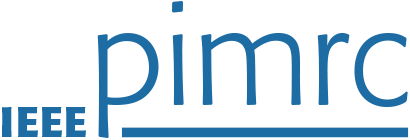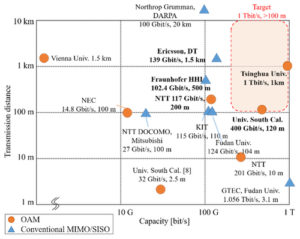Lecturers
Prof. Toshihiko Nishimura (Hokkaido University, Japan)
Toshihiko Nishimura received the B.S. and M.S. degrees in physics and Ph.D. degree in electronics engineering from Hokkaido University, Sapporo, Japan, in 1992, 1994, and 1997, respectively. Since 1998, he has been with Hokkaido University, where he is currently a Professor. His current research interests are in MIMO systems using smart antenna techniques. He received the Young Researchers’ Award of IEICE in 2000, the Best Paper Award from IEICE in 2007, and TELECOM System Technology Award from the Telecommunications Advancement Foundation of Japan in 2008, the best magazine paper award from IEICE Communications Society in 2011, and the Best Tutorial Paper Award from the IEICE Communications Society in 2018.
Prof. Fumiaki Maehara (Waseda University, Japan)
Fumiaki Maehara received the B.Eng., M.Eng., and D.Eng. degrees from Waseda University, in 1993, 1995, and 2001, respectively. He joined the NTT Wireless Systems Laboratories, in 1995, where he was engaged in the research and development of personal communication systems. He was a Research Fellow at the Japan Society for the Promotion of Science (JSPS) and a Visiting Researcher at the Institute
for Communications, University of Hannover, Germany, from 2003 to 2005. Since 2012, he has been a Professor with the Faculty of Science and Engineering, Waseda University. His current research interest includes mobile communication systems. He is a Senior Member of IEICE and IEEE.
Mr. Eisaku Sasaki (NEC Corporation, Japan)
Eisaku Sasaki received the B.E. degree from Osaka University, Japan in 1986. He joined NEC Corporation, Japan in 1986. Since joining the company, he has been engaged in development of microwave and millimeter-wave radios which are used mainly as mobile backhaul system today. He is currently an Executive Professional in Wireless Transport Development Department. His research interests include error-correcting codes, signal processing for higher-order modulation and spatial multiplexing systems including LoS-MIMO and Orbital Angular Momentum (OAM). He is a member of IEEE, ComSoc.
Dr. Doohwan Lee (NTT Corporation, Japan)
Doohwan Lee received the Ph.D. in electrical engineering and information systems from the University of Tokyo in 2009. He is a Distinguished Researcher, NTT Network Innovation Laboratories. His research interests include wireless communication, Electromagnetic information theory utilizing physical properties of radio waves including OAM, Bessel, and/or Airy beams, software/cognitive radio, and signal processing. He received many awards including the Best Paper Award and Best Technical Exhibition Award from the IEICE Software Radio in 2011, the IEICE Communications Society Excellent Paper Award in 2012, the IEICE SRW Young Researcher’s Award in 2016, the Best Paper Award from SmartCom 2016, the Best Paper Award and Special Technical Award in Smart Radio from IEICE Smart Radio in 2017, the Distinguished Contributions Award from IEICE Communications Society in 2021. He has been an IEEE ComSoC APB Officer since 2020. He was a co-chair of the Workshop on High Capacity Wireless Communications in IEEE GLOBECOM 2019, 2020, and 2022. He was a co-chair of the Workshop on Orbital Angular Momentum Transmission respectively IEEE in ICC 2019, 2020, 2021, and 2022.
Abstract
The demand for high-capacity wireless transmission will continue to grow toward 6G era when all sorts of VR/AR/xR provide full immersive experiences.
To accommodate ever-increasing wireless traffic, increasing the capacity of wireless communication becomes essential.
Orbital Angular Momentum (OAM) is considered as one of the promising technologies toward 6G that can provide high-capacity wireless transmission due to the unique property that electromagnetic waves carrying different OAM modes are orthogonal to each other.
Therefore, it is important to provide academic explanations from the basics to implementation regarding OAM multiplexing.
In particular, this tutorial is organized to provide academic explanation and discussion on
- Background and fundamental theory of OAM,
- Capacity analysis and signal processing issues,
- Application of OAM for fixed wireless systems in mmWave and sub-THz bands,
- Field experiments of OAM-MIMO multiplexing for wireless communications and its extension to multishape radio.
Motivation and Context
1. Motivation and Context
The demand for high-capacity wireless transmission will continue to grow toward 6G as IoT accelerates in all sorts of fields and VR/AR provides full immersive experiences. To accommodate ever-increasing wireless traffic, increasing the capacity of wireless communication becomes essential.
Orbital Angular Momentum (OAM) is considered as one of the promising technologies that can provide high-capacity wireless transmission due to the unique property that electromagnetic waves carrying different OAM modes are orthogonal to each other.
This figure shows recent research findings for high-capacity wireless transmission, including OAM and traditional MIMO/SISO technologies. As shown, wireless transmission using OAM 100 Gbit/s to 1 Tbit/s have been experimentally validated and related research works are underway.
Although academic studies on OAM have been carried out, these recent studies on OAM, which competes with traditional MIMO/SISO technology, have renewed interest in OAM multiplexing technology in the literature. Therefore, It is highly necessary to provide through academic explanations and discussions from the basics, implementation, and expansion, including recent findings.
This tutorial is organized to provide academic explanation and discussion on 1) basics and fundamentals of OAM multiplexing, 2) capacity analysis and propagation characteristics, 3) comparison to conventional MIMO, 4) implementation issue including baseband signal processing, calibration, and overall transceiver design, 5) experimental studies using mmWave and sub-THz bands, 6) challenges and related issues toward 6G, and its extension.
This tutorial includes explanations and discussions on 1) basics and fundamentals of OAM multiplexing, 2) propagation characteristics and capacity analysis, 3) implementation issues including baseband signal processing and overall transceiver design, 4) experimental studies
using mmWave and sub-THz bands, and 5) further issues for 6G and its extensions.
2. Reason why this tutorial is a good topic for the IEEE PIMRC 2022.
This topic is timely and is in perfect agreement with the target audience for IEEE PIMRC. Many research works on vision and roadmap toward 6G are published from 2020 to 2022. It is check-point of research works toward 6G. As one of such, deep study on OAM multiplexing technology from theory to implementation will provide a significant contribution to the literature. OAM multiplexing, although facing some challenges, can offer high-capacity wireless transmission. The PIMRC audiences, who concerns the wireless transmissions and wireless networks, can learn how to use OAM multiplexing wireless communication for 6G.
Structure and Content
Intro: Introduction to the tutorial and overall content
(Presenter: Dr. Doohwan Lee)
Part I: Background and Fundamental Theory of OAM
(Presenter: Prof. Toshihiko Nishimura)
- Basics of OAM: Electromagnetic wave with helical phase front
- Potential of OAM multiplexing toward 6G
- OAM antenna, OAM beam generation/reception
- OAM multiplexing technology
- Theoretical evaluation of robustness improvement of OAM Using multiple uniform circular array
Part II: Capacity Analysis and Signal Processing Issues
(Presenter: Prof. Fumiaki Maehara)
- Capacity analysis of UCA-based OAM/OAM-MIMO multiplexing
- Combination of OAM multiplexing and dual-polarization and its effectiveness study
- Performance analysis of OAM-MIMO using SIC
- Inter-mode interference due to misalignment of beam axis and its suppressio
Part III: Application of OAM for Fixed Wireless Systems in mmWave and sub-THz bands
(Presenter: Mr. Eisaku Sasaki)
- OAM Signal MUX/DeMUX by DSP
- Practical Issues and Countermeasures for Antenna Misalignment
- Field Experiments of OAM transmission in E-band and D-band
- Study of Link Distance Expansion
- Summary of this Part
Part Ⅳ: Field Experiments of OAM-MIMO multiplexing for Wireless Communications, its extension to multishape radio
(Presenter: Dr. Doohwan Lee)
- OAM-MIMO multiplexing using analog Butler matrix
- Hybrid analog and digital architecture toward Tbps level wireless transmission using OAM
- Field experiments of analog/digital hybrid OAM transmission using mmWave and sub-THz bands
- Extension: Point to multi-Point wireless communication, Laguerre-Gaussian beams, and multishape radio
- Challenges, Expectation toward 6G



